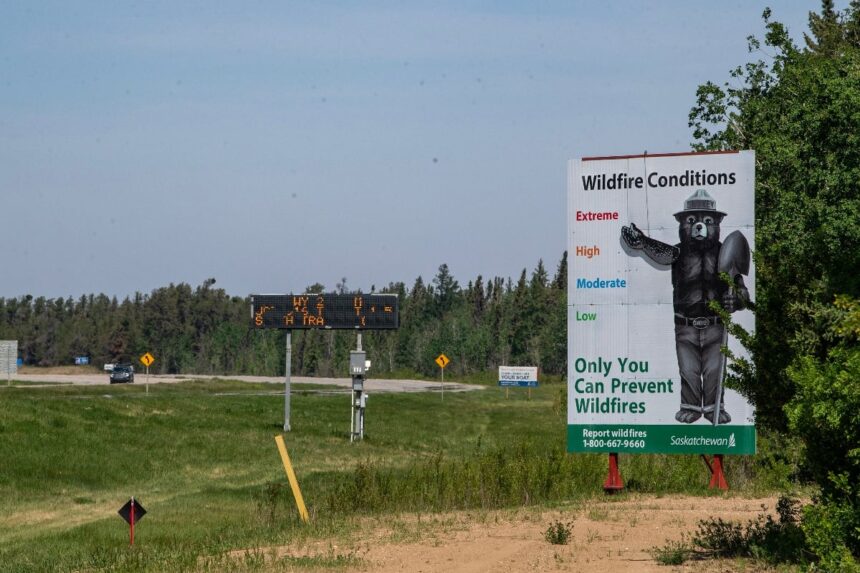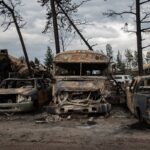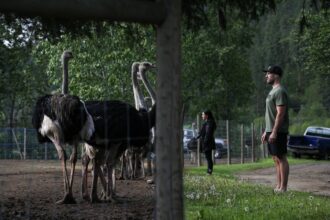The charred remnants of forest that once stood proud across British Columbia tell only part of Canada’s unfolding wildfire story. As July’s heat dome finally relents, Canadian meteorologists and fire scientists are issuing stark warnings: August 2025 promises to deliver potentially catastrophic wildfire conditions across multiple provinces, with unprecedented fuel loads and weather patterns converging to create what experts describe as a “perfect firestorm.”
“We’re seeing troubling indicators in our long-range forecasting models,” explains Dr. Amrita Singh, senior climatologist at Environment Canada. “The combination of record-breaking spring temperatures, below-average precipitation, and unusually strong wind patterns suggests August will bring extreme fire behavior in regions already struggling with containment.”
The Canadian Wildfire Information System has elevated risk assessments for nearly 70% of the country’s forested areas, with particular concern centered on British Columbia, Alberta, and the Northwest Territories. The fire danger rating system, which factors in temperature, relative humidity, wind speed, and precipitation, shows vast swaths of the country’s wilderness at “extreme” risk levels—a designation that hasn’t been this widespread since the devastating 2023 wildfire season.
In British Columbia alone, provincial firefighting resources are already stretched to critical limits, with over 127 active wildfires currently burning across the province. Officials from BC Wildfire Service have confirmed they’re implementing contingency plans that include requesting additional international assistance beyond the Australian and New Zealand crews already deployed.
“What makes this forecast particularly concerning is the unprecedented fuel load in our forests,” notes Dr. James Thompson, forest ecology researcher at the University of British Columbia. “Years of drought stress combined with beetle infestations have created tinderbox conditions in areas that typically would be more resistant to fire spread.”
The economic implications of this intensified wildfire season are already rippling through Canada’s economy. Tourism operators report cancellations at rates 40% higher than this time last year, while forestry companies have temporarily halted operations across high-risk zones, affecting nearly 11,000 workers. Insurance analysts predict potential claims could exceed $5 billion if worst-case scenarios materialize.
Indigenous communities, often on the frontlines of wildfire response, are implementing traditional knowledge-based fire management strategies that have proven effective in previous seasons. “Our ancestors understood fire as both destroyer and creator,” explains Elder Marion Clearwater of the Tk’emlúps te Secwépemc Nation. “We’re working with provincial authorities to incorporate controlled burning techniques that have sustained our forests for thousands of years.”
Federal emergency response officials have mobilized additional resources, including deploying Canadian Armed Forces personnel to high-risk regions and establishing evacuation protocols for communities potentially in harm’s way. Minister of Emergency Preparedness Alex Rodriguez has confirmed that federal disaster relief funding has been preemptively authorized to ensure rapid deployment if needed.
Climate scientists point to this intensifying wildfire pattern as further evidence of climate change’s accelerating impact on Canadian ecosystems. “What we’re witnessing isn’t an anomaly—it’s the new normal,” warns Dr. Leanne Morris, climate researcher at the University of Toronto. “Each successive fire season builds upon the damage of previous years, creating feedback loops that amplify fire behavior.”
As Canadians prepare for what may become another record-breaking fire season, the question emerges with increasing urgency: How will our national approach to forest management, community protection, and climate action evolve to address what has clearly become not just an environmental crisis, but a fundamental threat to our way of life?

























